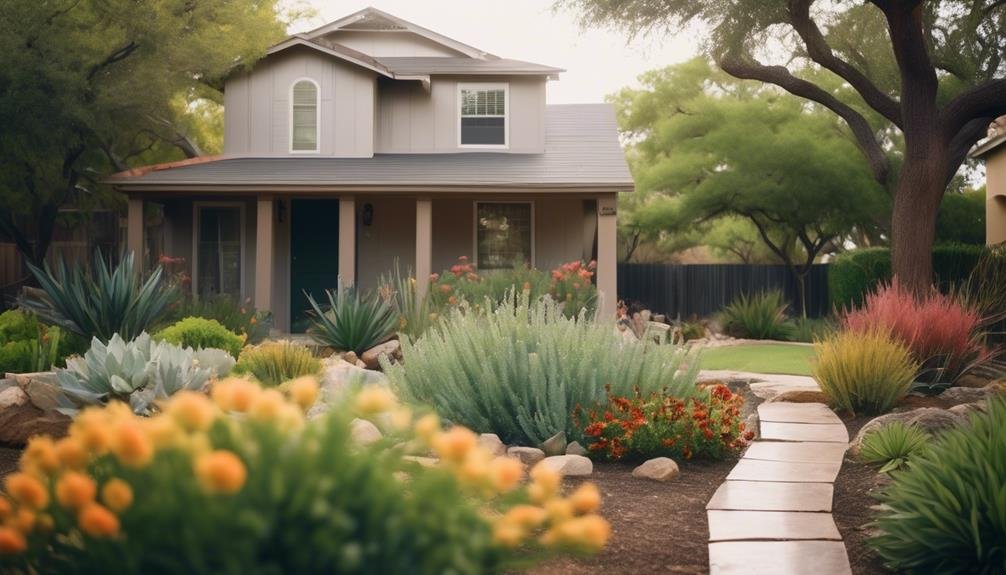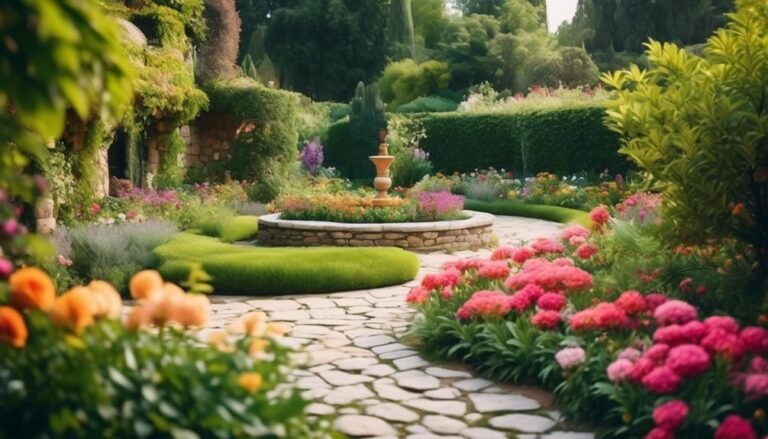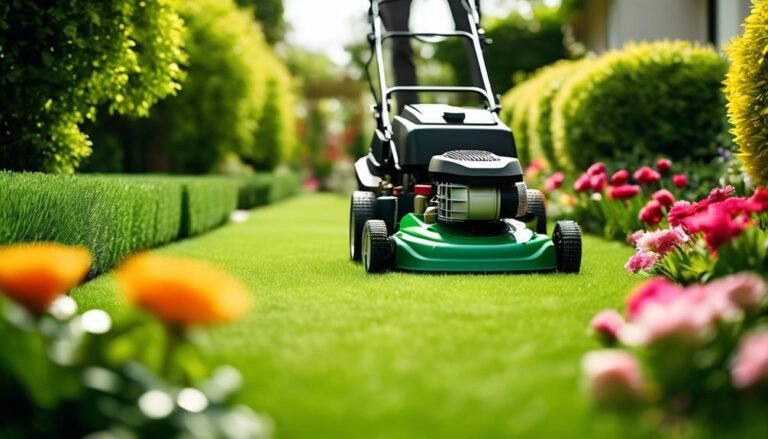Green Landscaping Tips for San Antonio Homes
Standing in your front yard, imagining a landscape that thrives in the San Antonio heat like a desert oasis, it's important to consider green landscaping tips that will not only make your home more beautiful but also help the environment.
With the unique climate and terrain of San Antonio, finding the right balance between aesthetics and eco-friendliness can be a rewarding challenge. From choosing native plants to using water-saving techniques, there are numerous strategies to explore that can transform your outdoor space into a haven of natural beauty while minimizing maintenance and water consumption.
Key Takeaways
When you're out in your front yard, envisioning a landscape that can thrive in the San Antonio heat like a desert oasis, it's important to think about green landscaping tips that will not only make your home more beautiful but also help the environment.
In San Antonio, the climate and terrain are unique, so finding the right balance between making your yard look great and being eco-friendly can be a fun challenge. From choosing plants that are native to the area to using techniques that save water, there are many strategies to consider that can turn your outdoor space into a natural haven of beauty while also cutting down on the need for maintenance and water.
By making these changes, you can create a landscape that not only looks beautiful but also helps the environment and conserves resources. It's a win-win for your home and the planet.
Sustainable Lawn Alternatives
Consider replacing traditional grass with sustainable lawn alternatives such as xeriscaping, native plants, mulch, and rocks. This helps reduce maintenance and watering needs while promoting eco-friendly landscaping.
In San Antonio, where the soil can be challenging for grass, these native options aren't just practical but also innovative.
By opting for xeriscaping, you'll create a low-maintenance and water-wise lawn, saving you time, water, and money. The native plants have adapted to the local climate and require less water, making them an eco-friendly choice. Using mulch and rocks can help in retaining moisture and regulating the temperature of the soil, supporting the growth of plant roots.
In shaded areas, ground covers like horseherb and heartleaf skullcap are excellent low-maintenance options. By incorporating these sustainable lawn alternatives, you can't only reduce the time and effort needed for maintenance but also contribute to the local ecosystem by providing food and shelter for wildlife.
Embracing these alternatives not only gives you the freedom from constant lawn care but also aligns with the eco-friendly ethos, making your landscaping more sustainable.
Native Plant Selection
Selecting native plants for your San Antonio landscape is crucial for supporting the local ecosystem and reducing maintenance. Native trees like Eves necklace and Mexican buckeye thrive in San Antonio's climate with minimal care. You can also add vibrant colors to your flower beds with options like American basketflower and Englemann's daisy, which not only bring beauty but also attract local pollinators. Consider low-maintenance shrubs such as Black dalea and dwarf palmetto to enhance your landscape with minimal effort. Here are some suitable native plant options for your San Antonio landscape:
| Native Trees | Native Flowers |
|---|---|
| Eves necklace | American basketflower |
| Mexican buckeye | Englemann's daisy |
Water-Saving Techniques
Want to keep your garden looking great while also saving water? One smart way to do this is by using a drip irrigation system. It delivers water directly to plant roots, so you can be sure they're getting just the right amount of hydration.
Another tip is to group together plants that have similar water needs. This helps prevent overwatering and makes the most of the water you use.
You could also think about using rain sensors or smart irrigation controllers. These can stop you from watering your garden when it's already raining, which saves both time and water.
It's also a good idea to adjust your watering schedule as the seasons change, especially in late summer. This way, your plants get just the right amount of water.
And if you want to go even further, you might consider using permeable paving or creating a rain garden. These features can help save water and reduce runoff in your garden.
If you're not sure where to start, it's a good idea to chat with a lawn care expert. They can give you advice that's tailored to your garden's specific needs.
By using these tips, you'll not only be helping the environment, but you'll also be keeping your flower beds and green spaces healthy and beautiful.
With these clever ideas, you can create a sustainable and water-efficient garden and still enjoy spending time in your outdoor space.
Eco-Friendly Hardscaping
Are you looking to upgrade your outdoor space with a sustainable and low-maintenance design? Eco-friendly hardscaping does just that by using environmentally friendly materials and clever designs. It not only makes your outdoor area look great but also helps the environment.
By using elements like permeable pavers and gravel pathways, eco-friendly hardscaping helps conserve water and reduces the need for ongoing maintenance. This means less water consumption and less work for you, all while improving the visual appeal of your outdoor living space.
Using non-living materials like stone, wood, and concrete also reduces the amount of water needed compared to traditional lawns, making it a practical and innovative choice for homeowners.
If you're interested in creating a sustainable and beautiful outdoor space, reach out to us for a free quote and take the first step towards an eco-friendly hardscaping project.
Pollinator-Friendly Gardens
Are you interested in creating a sustainable and easy-to-maintain outdoor space?
One way to achieve this is by adding a pollinator-friendly garden that attracts important pollinators like bees and butterflies. You can do this by planting native flowers and shrubs in your garden.
Choose a variety of plants that bloom at different times to provide nectar throughout the year. This variety will ensure a consistent food source for the pollinators.
Also, by avoiding pesticides and herbicides, you can create a safe environment for the pollinators to thrive.
To further support pollinator populations, consider adding features like bee houses and butterfly puddling areas. These features will provide essential resources for the pollinators, contributing to a healthier ecosystem.
Educating others about the importance of pollinators and the role they play in sustaining ecosystems can also have a positive impact.
Frequently Asked Questions
What Landscaping Adds Most Value to Home?
When thinking about landscaping for your home, focus on using drought-resistant plants, native species, hard landscaping, and flowers that are easy to maintain. Embrace eco-friendly practices, automate your irrigation system, and create welcoming outdoor areas. Choose low-maintenance options, add privacy, and introduce seasonal pops of color to maximize your home's value.
How Do I Plan Landscaping Around My House?
When planning your landscaping around your house, it's important to consider low-maintenance options like xeriscaping and using native plants. These choices can save you time and effort in the long run, as they require less water and care.
In addition to plants, you might also want to think about adding hardscaping elements like pathways, patios, or retaining walls. These features not only add functionality to your outdoor space but also contribute to the overall aesthetic of your landscaping.
Another thing to consider is installing an automated irrigation system. This can help you save water and ensure that your plants are getting the right amount of hydration without you having to spend a lot of time manually watering them.
Creating outdoor living spaces is also important for enhancing the ambiance and usability of your landscaping. Think about adding seating areas, a fire pit, or a barbecue area to make your outdoor space more inviting and enjoyable for you and your family.
How Do I Make My Yard Landscape Like a Professional?
If you want your yard to look professional, consider xeriscaping, using native plants, and adding hardscaping elements. These options are low-maintenance and eco-friendly, saving you time and giving you more freedom. You can also think about installing automated irrigation and creating defined outdoor living spaces for a practical, easy-to-manage yard.
How Do I Landscape My Front Yard on a Budget?
Landscaping your front yard on a budget is all about making smart choices. You can start by selecting low-maintenance native plants that thrive in your area. These plants are not only easier to care for but also require less water, which is good for the environment and your wallet.
Consider xeriscaping with materials like pea gravel and succulents. This approach reduces the need for watering and maintenance while adding a modern and eco-friendly touch to your yard.
Incorporating hardscaping elements, such as fire pits or stone pathways, can also add visual interest to your front yard without breaking the bank. Plus, hardscaping requires minimal upkeep compared to traditional grass lawns.







